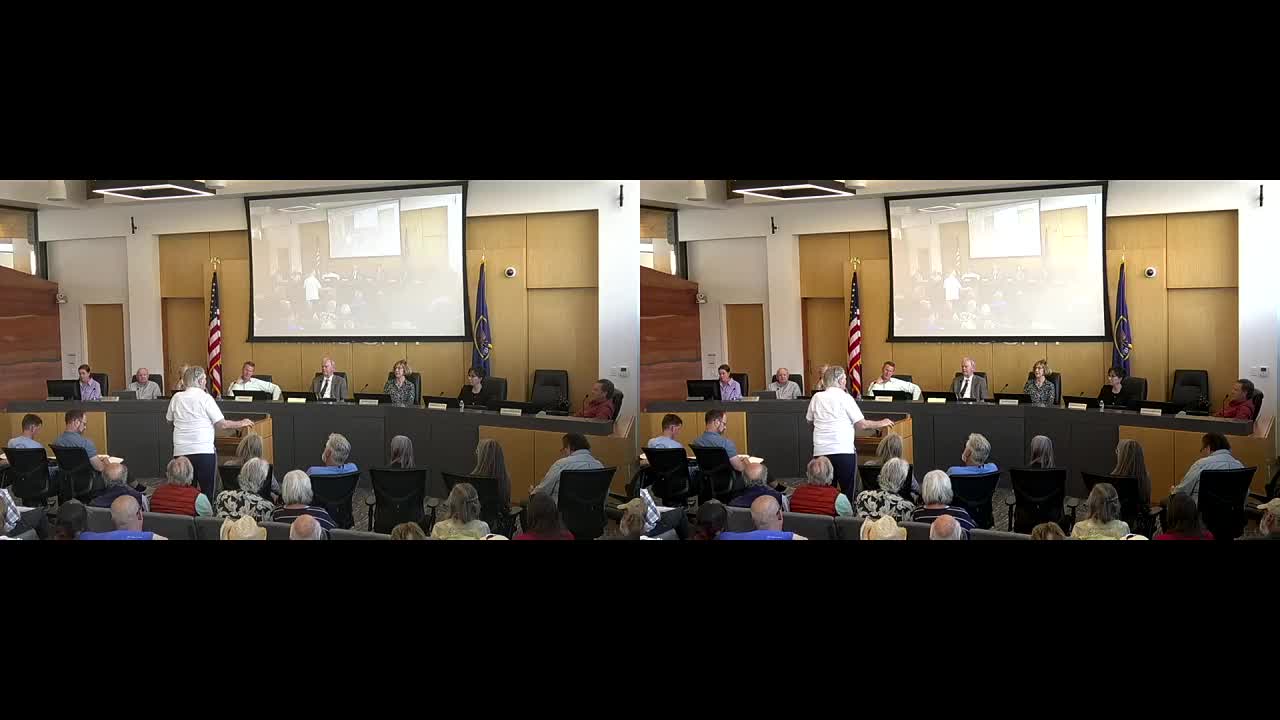Council debates controversial reservoir plans amid safety concerns
March 21, 2024 | Ivins City Council, Ivins, Washington County, Utah

This article was created by AI summarizing key points discussed. AI makes mistakes, so for full details and context, please refer to the video of the full meeting. Please report any errors so we can fix them. Report an error »

During a recent government meeting, discussions centered on the proposed water reservoir project in Ivins, with significant focus on its implications for the local community and environmental safety. The meeting highlighted the ongoing debate regarding the reservoir's size, location, and potential environmental impacts, particularly concerning dust generation and groundwater issues.
Council members addressed the status of alternative water sourcing options, including the graveyard wash and a proposal by Terry Martin to sell water to Ivins. It was clarified that these options are still under consideration by the Washington County Water Conservation District, as the project is not solely a city initiative.
Wayne, a council member, presented concerns regarding the proposed reservoir's capacity and its environmental implications. He emphasized that the reservoir's design must adhere to safety guidelines established by previous geotechnical studies, which recommend a maximum water elevation of 3,040 feet. The current proposal suggests a higher elevation, raising safety concerns among council members.
The discussion also touched on the potential for dust mitigation through design modifications. Wayne proposed a smaller reservoir footprint that could reduce the area exposed to wind, thereby minimizing dust generation. He noted that the current district proposal could leave approximately 47 acres alternately wet and dry, while his modified plan could reduce this to around 23 acres.
Council members expressed the need for a thorough examination of the reservoir's design to ensure it meets safety standards and minimizes environmental impact. They acknowledged the importance of collaboration between the city, the water district, and local residents to address these concerns effectively.
As the meeting concluded, the council agreed to further investigate the safety and environmental implications of the reservoir project, emphasizing the necessity of balancing community needs with environmental stewardship. The discussions underscored the complexity of water management in the region and the critical role of local governance in navigating these challenges.
Council members addressed the status of alternative water sourcing options, including the graveyard wash and a proposal by Terry Martin to sell water to Ivins. It was clarified that these options are still under consideration by the Washington County Water Conservation District, as the project is not solely a city initiative.
Wayne, a council member, presented concerns regarding the proposed reservoir's capacity and its environmental implications. He emphasized that the reservoir's design must adhere to safety guidelines established by previous geotechnical studies, which recommend a maximum water elevation of 3,040 feet. The current proposal suggests a higher elevation, raising safety concerns among council members.
The discussion also touched on the potential for dust mitigation through design modifications. Wayne proposed a smaller reservoir footprint that could reduce the area exposed to wind, thereby minimizing dust generation. He noted that the current district proposal could leave approximately 47 acres alternately wet and dry, while his modified plan could reduce this to around 23 acres.
Council members expressed the need for a thorough examination of the reservoir's design to ensure it meets safety standards and minimizes environmental impact. They acknowledged the importance of collaboration between the city, the water district, and local residents to address these concerns effectively.
As the meeting concluded, the council agreed to further investigate the safety and environmental implications of the reservoir project, emphasizing the necessity of balancing community needs with environmental stewardship. The discussions underscored the complexity of water management in the region and the critical role of local governance in navigating these challenges.
View full meeting
This article is based on a recent meeting—watch the full video and explore the complete transcript for deeper insights into the discussion.
View full meeting

